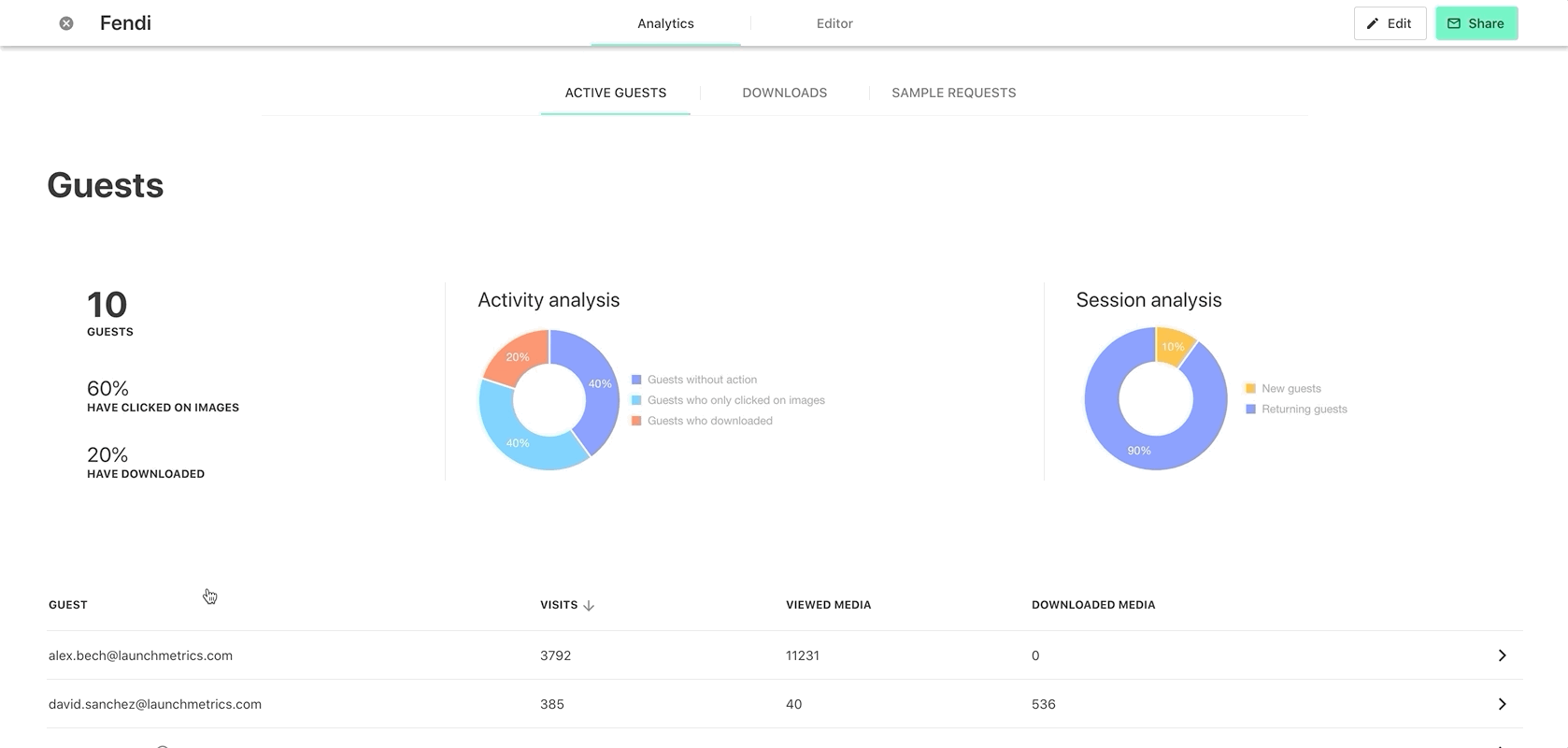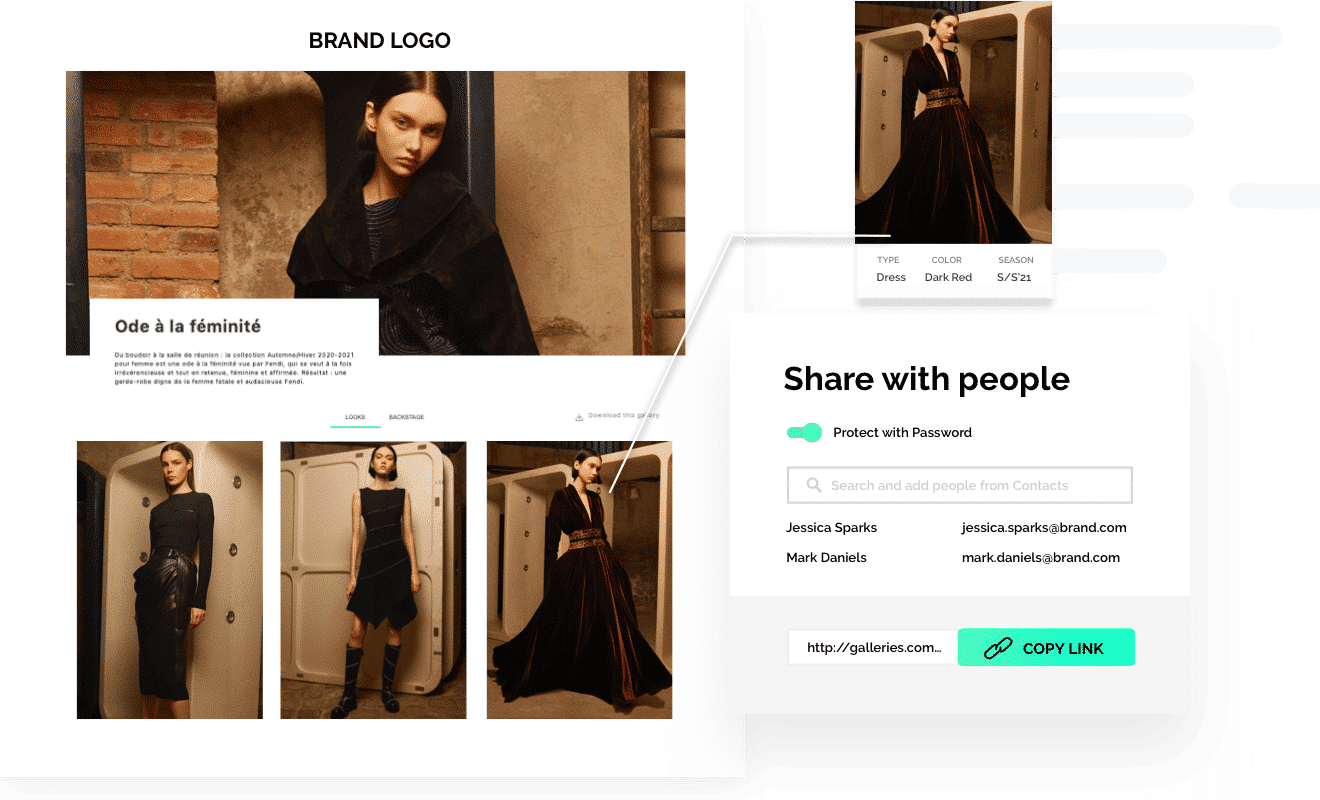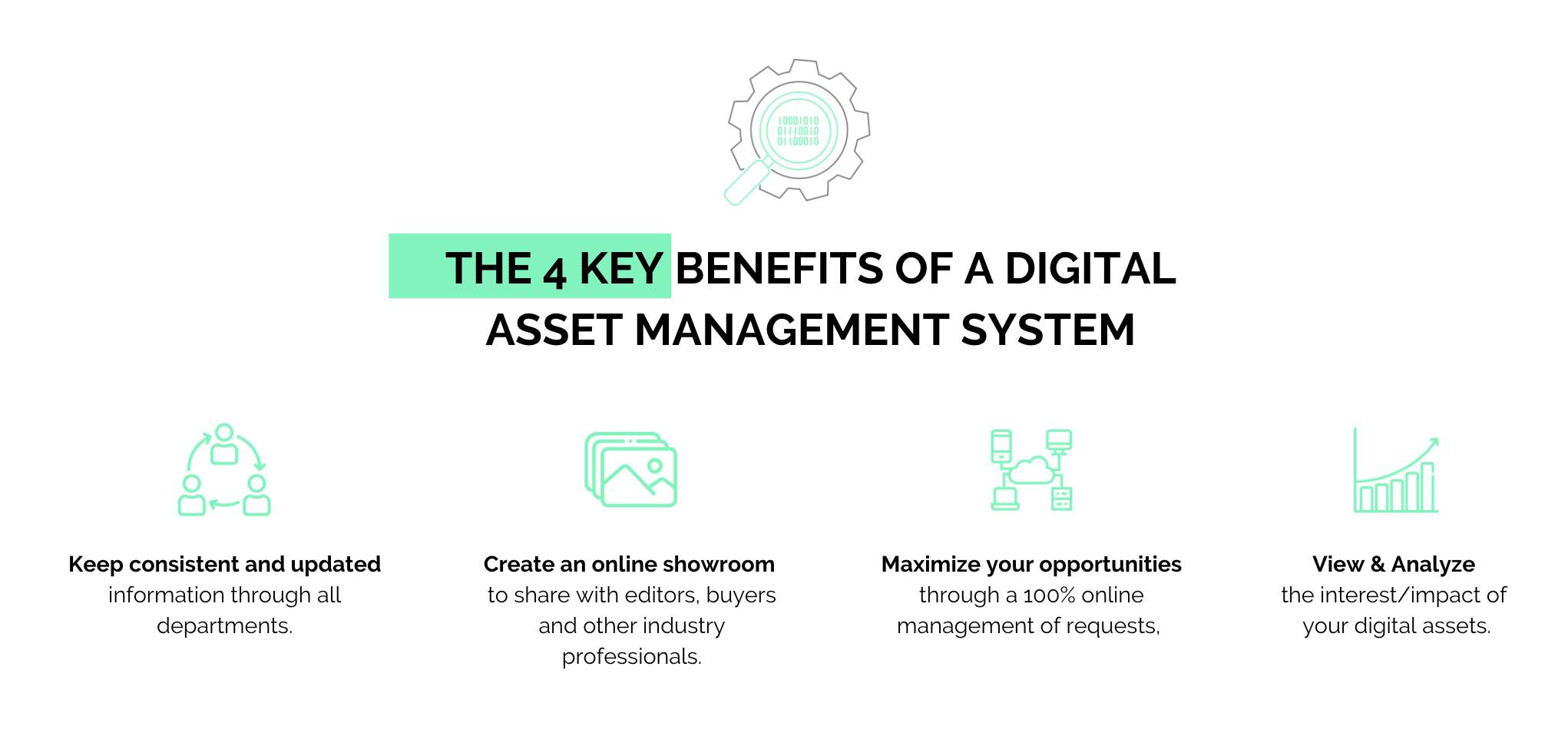“The biggest opportunities for big companies has come by far in the digitization of internal processes.” Jack welch
We are living in a period of constant change – and if COVID has taught us anything it’s the importance of digitizing the entire supply chain – especially for companies in the fashion, luxury, and beauty industries.
Typically when talking about digitization the discussion focuses on customer-facing initiatives, customer loyalty programs, AI, etc
However, the management of brand assets – physical or digital – impacts profitability just as much as the aforementioned areas.
Let me explain…
Digital asset management (DAM) can be complex, especially for large companies with numerous teams involved. From the moment a sample is designed and the first prototypes are produced, it passes through several different hands…
First, the merchandising and purchasing teams, then on to photography, eCommerce, PR, showroom departments…
There are multiple steps through which the risks of loss of information or physical samples, and the delay in launching to market can represent a great cost for the company. For the sales team of a global brand, for example, it is estimated that delays in launching collections to market can amount to up to $1.8 million in losses.
This is where a digital asset management system comes into play.
In this article you’ll learn…
What is a Digital Asset Management System?
Digital asset management systems store, organize, and more efficiently retrieve and distribute a company’s entire library of digital assets.
DAM systems vary based on specific company/industry requirements.
For large broadcasting and entertainment companies, such as the BBC, storage space for high-definition media files (video and audio) is the number one priority. In the case of the World Digital Library – with 1,057,175 digital assets in about 145 languages in 193 countries – consistency and interoperability of metadata is its primary focus.
In the case of fashion, beauty, and luxury companies a DAM system is typically used to facilitate the launch of new collections, monitor and analyze a product’s lifecycle, and offer crucial information – information that helps brands understand the use, impact, and potential opportunity of each sample, which is translated into fast and effective decision making.
What is a Digital Asset?
A digital asset is any valuable file created and stored (typically within a DAM system) in a digital format.
There are several different types of digital assets, including:
- Documents (PDF, Word Doc, Sheet, etc.)
- Images (PNG, JPEG, etc.)
- Audio (MP3, MP4, WAV., etc.)
- Video (MP4, MOV., FLV., etc.)
Why use a Digital Asset Management System?
So OK, you understand what a digital asset management system is but are still probably asking yourself:
“How can a DAM system specifically help my team on a day-to-day basis?”
Below are three main reasons to implement digital asset management software in your fashion, luxury, or beauty organization.
#1 Insights
Nowadays, an immense number of digital assets are produced by fashion and lifestyle brands all providing tremendous value.
The ability to record information by brand, collection, and season, organizing campaign imagery, digital banners, and press releases (PDF) within a DAM system means not only having control over your brand assets but also acting as a great source of information and inspiration!
Digital asset management software platforms will offer you reports and insights on internal and external usage.
For example, you can see:
- How many views an image received.
- How many downloads by press contacts did an asset accrue.
- How many buyers clicked on a particular video.
- Or how many samples requests were recorded by season.
These are just a handful of metrics that will help you to better understand the performance of your collections, their internal use, and at the same time, allow you to make decisions to optimize future releases and collections.

#2 Maximize Digital Asset Exposure
Today’s PR departments work in an increasingly digital scenario, in which physical events have been transformed into virtual shows, showrooms, and digital galleries.
Also, the expectations of journalists and Key Opinion Leaders (KOL) have evolved towards much faster and more fluid experiences in the online space.
Having a digital asset management system adapted to the needs of the fashion and lifestyle sector requires hosting online showrooms, allowing you to showcase collections, provide downloadable high-quality digital assets images, and accept sample requests samples all from a single tool.

#3 Optimize Internal Workflows
Marketing operations (well, operations in general) are becoming increasingly important in a world dominated by multiple technologies.
The optimization of internal processes means not only increased agility but greater productivity and a definitive monetary impact on the business. Profitability comes not only from product sales but from the effectiveness of teams working and leveraging technology in an efficient way.
DAM software facilitates how you store all of your assets in an easily searchable location, providing global access at any time, from anywhere.
Additionally, DAM systems solve a problem that has plagued the fashion and luxury industry for decades: the loss of samples or physical assets.
By connecting these tools with your sample stock you can effectively tackle this problem once and for all. By searching and filtering through your digital archives you can gather insights and eliminate the cost of lost or misplaced items. You will not only save time but money too!
Benefits of a Digital Management System
Now that we’ve established why you should consider implementing a digital asset management system, it’s time to highlight the four main benefits a DAM system provides for fashion and retail companies throughout the product lifecycle.

#1 Break down departmental silos
There are many teams within a fashion and retail company that manage product information on a daily basis. Productivity is essential but so is having a synchronized, unique, and standard information workflow for all teams involved.
Samples enter and leave departments more quickly – through barcode scanning systems or smart RFID tags -, the photography team receives samples and products much earlier in order to produce digital assets, the eCommerce team is able to launch these collections online faster, and the showroom or PR department can quickly distribute the collection’s galleries through the press and professional audience.
In conclusion: the launch-to-market is much more agile.
A digital asset management software facilitates the flow of information, increases team productivity, and maintains greater control over each sample and product, its location, and its destination.

#2 Drastically increase media impact
“By creating a cultural fashion platform, we are tailoring digital innovation to better suit our current needs. We are working on something that can be a global showcase for the future.” Caroline Rush, Chief Executive of the British Fashion Council (BFC) said a few weeks after announcing that the 2020 edition of London Fashion Week will be held in a virtual format.
While the industry steadily recovers from the COVID pandemic, It seems that a combination of physical and online events is the future for launching collections.
Consumers will tend to move to online channels for purchase, but what about the professional audience?
Communicating collections and campaigns to the press, buyers, stylists, and other professional profiles will continue to be necessary in order to maximize reach. Therefore the use of digital galleries or virtual showrooms is absolutely mandatory.
#3 Maximize sales and editorial opportunities
As previously mentioned, digitally managing all the processes carried out by a fashion or retail business offers a great opportunity for controlling every step of the supply chain.
Delays in the entry of a sample or the loss of products are much more unlikely and therefore, make it easier for teams – such as PR – to cover a greater number of editorial opportunities.
If, in addition, the virtual showroom offers journalists the possibility of making their requests through a single platform, without the need for endless email chains…then all the better!
#4 Measuring and analyzing digital asset management
It may not be the most valued benefit, but it is the most impactful for strategic business decisions.
Keeping your entire brand asset management system digitized represents a large amount of internal information collected that you can use to understand the different stages your product or samples go through.
From analyzing production issues at certain points in the supply chain to measuring the interest that your collections generate: the most viewed, downloaded product images, the most requested products, etc.
All of this information will allow the executive and business teams to make more accurate decisions – something that is critical for optimizing internal processes or anticipating the production of present and future collections.
Implementing a Digital Asset Management System
Digital asset management impacts various levels of the business, as you’ve seen.
If you want to know more about digital asset management, download our eBook the 5 Reasons to build a digital showroom.


